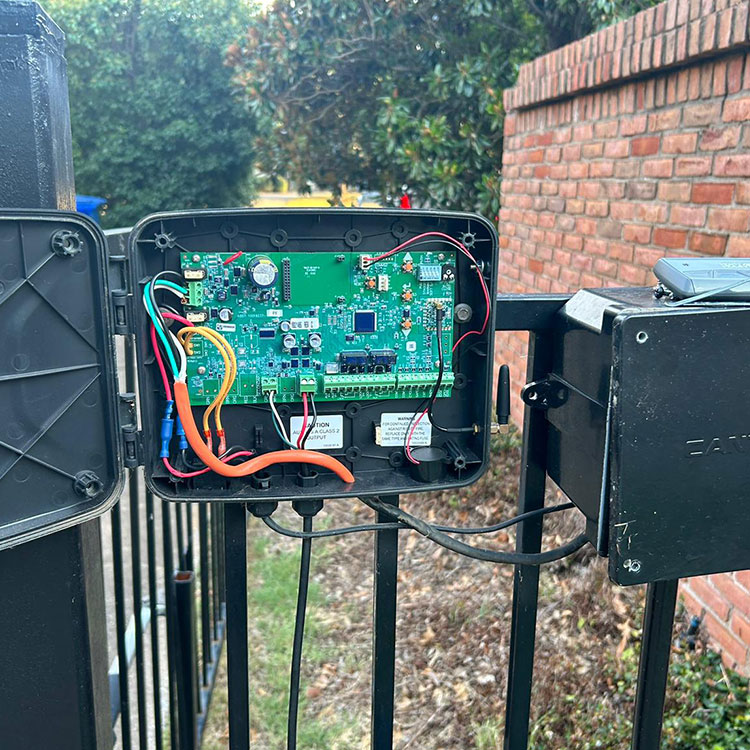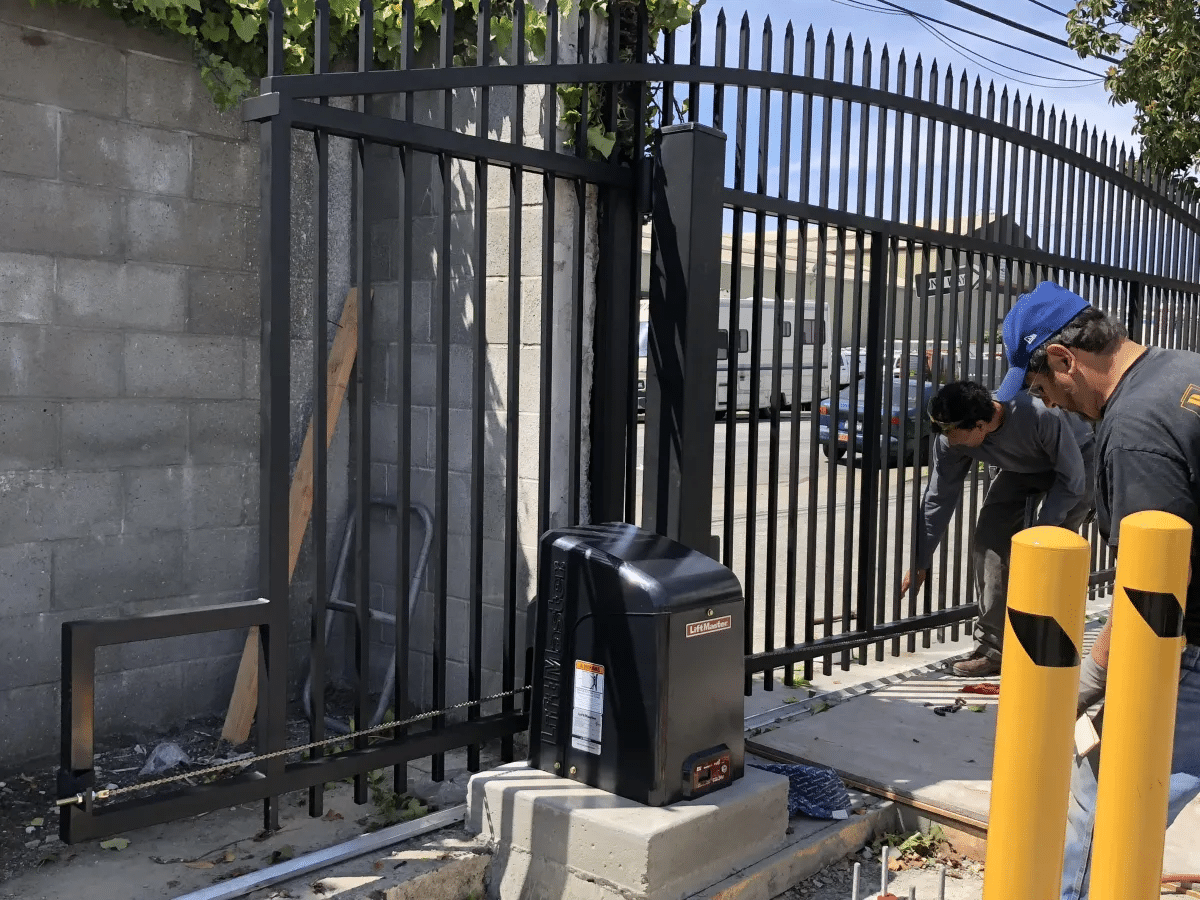What Simple Maintenance Can I Do to Prevent Gate Breakdowns?
Many gate failures start as small issues that are easy to miss. Regular inspections catch the wobble, squeak, or slow start before they turn into a stuck gate and an urgent callout. Simple tools, careful observation, and a steady routine make the biggest difference. You don’t need advanced skills to keep your gate operating smoothly.
By following an obvious maintenance plan, you can increase the lifespan of motors, hinges, rollers, and belts. If you are creating your own checklist, you can reference common repair practices shared by services like Gate Repair Fort Worth TX and apply the same steps at home.
Clean first, inspect second
Cleaning parts reveals problems earlier. Use a soft brush or wet cloth to remove dust and dirt, then dry surfaces to avoid rust. While inspecting, look for cracks or shiny spots caused by rubbing, indicating wear. Sweep tracks and sliding areas to remove debris. Wipe hinges, rollers, and brackets with a dry cloth.
Clear sensors and photocells from leaves and cobwebs. Check posts for mud buildup that may hide movement or rot. Following these steps regularly can help reduce costly repairs and make gate repair fort worth tx services less frequently necessary.
Lubricate the right way
Proper lubrication reduces friction, noise, and wear. Avoid heavy oils that collect dirt and damage tracks.
- Apply light system oil to hinge pins and slide the gate.
- Use silicone spray on rollers and plastic components; wipe off excess.
- Keep lubricants away from belts and control panels.
- Recheck after a week to ensure noise reduction.
Tighten hardware gently
Loose bolts cause wobble, misalignment, and strain on motors. Tighten carefully to avoid stripping threads.
- Test each hinge bolt and bracket screw with a snug turn.
- Confirm that roller brackets sit square to the track.
- Replace missing split pins or safety clips.
- Use the thread locker only where the manual allows.
Align and balance the gate
A sagging or dragging gate stresses the opener. Correct alignment prevents stops and starts.
- Check the gap between the gate and posts from top to bottom.
- Look for scraping marks on the ground or track.
- Adjust hinge height or roller position in small steps.
- Test by opening and closing twice while watching the same point.
Keep track and guide true
Tracks bend, and guides drift out of the square. Small bends make rollers climb and jam. Straightening and realigning saves motors from overwork.
- Sight down the track to spot waves or dents.
- Tap minor bends straight with a rubber mallet.
- Confirm guide wheels touch evenly on both sides.
- Replace flat-spotted rollers before they seize.
Well-maintained tracks and guides improve the overall flow of the gate and prevent sudden stalls or jams.
Protect the motor and electronics

– Image Name: gate-motor-electronics-protection.jpg
– ALT Tag: Open gate control box showing circuit board and wiring, emphasizing the importance of protecting motor and electronic components from damage.
Moisture and insects are common enemies. Dry, sealed housings protect the board and relays. Good cable management prevents tugging and shorts.
- Brush away nests and seal entry gaps on housings.
- Examine grommets for fractures where wires are coming in.
- Make sure the control cabinet is placed above the ground and dry.
- Press together the low-voltage terminals and mark every wire.
Protecting the electronics helps prevent costly failures and keeps safety features like automatic stops functional.
Test safety systems every month
Safety devices keep people and vehicles safe, and a quick test proves they work. Never bypass safety for convenience. Treat odd behavior as a warning.
- Wave a stick through the photocell beam to confirm the reverse.
- Lightly press the leading edge to verify auto-stop.
- Use the manual release to be sure it moves freely.
- Replace dead batteries in remotes and keypads.
Testing safety systems monthly gives peace of mind and ensures your gate complies with residential or commercial safety standards.
Build a quick routine
Consistency trumps complexity. A brief list that you stick to is better than a lengthy list that you lose track of. Make a logbook with dates and notes so trends become evident.
- Choose a day each month and have a reminder set.
- Maintain the sequence: clean, lube, tighten, align, test.
- Document the sounds, the speeds, and any little adjustments.
- Call a qualified technician when something repeats.
A routine ensures early problem detection, keeping emergency repairs to a minimum.
Seasonal smart moves
Weather changes reveal weak points. Heat dries lubricants, while cold thickens them. Rain and dust add grit.
- In hot months, use a lighter lubricant and shade electronics.
- In rainy times, re-seal housings and clear drain holes.
- Before cold snaps, test batteries and slow-speed settings.
- After storms, remove branches and recheck sensors.
Seasonal adjustments extend the life of your gate and prevent weather-related breakdowns.
Small tools, big value
You do not need a full workshop. A few basics cover most tasks. Keep it in a labeled bag close to the door, but where it will not get wet. A screwdriver set, a small adjustable wrench, and Allen keys should be the tools that you always carry with you.
- A level, torch, dry rag, and silicone spray should be added to your kit.
- Include spare clips, cable ties, and a computer.
- Use gloves and safety goggles if you are dealing with metal.
Having a dedicated toolkit makes maintenance fast, safe, and convenient.
When to stop and call
Some signs point to deeper faults. Stopping early prevents extra damage and keeps everyone safe.
- Smell of burning from the motor housing.
- Circuit breaker trips more than once.
- The gate moves unevenly, even after alignment.
- Visible cracks in welds or posts.
For serious concerns, contact a trusted professional for gate repair to ensure safety and proper operation.
A printable mini checklist
Keep this list near your toolkit. Tick each item in sequence.
- Sweep track and path.
- Wipe hinges, rollers, and sensors.
- Lubricate hinges and rollers.
- Tighten bolts and brackets.
- Align the gate and guides.
- Inspect the motor box and cables.
- Test the safety beam, edge, and manual release.
- Log notes and set the next date.
Simple, steady care prevents most gate breakdowns and keeps daily use calm and safe. A clean path, correct lubrication, and gentle alignment reduce strain and noise. Regular safety tests protect people and parts, while a short written log helps you spot patterns before they turn serious. If you follow this basic plan with patience, you will avoid many sudden failures, as shown by lessons shared through services like gate repair Fort Worth tx, and you will enjoy a smoother, quieter, and longer-lasting gate.







